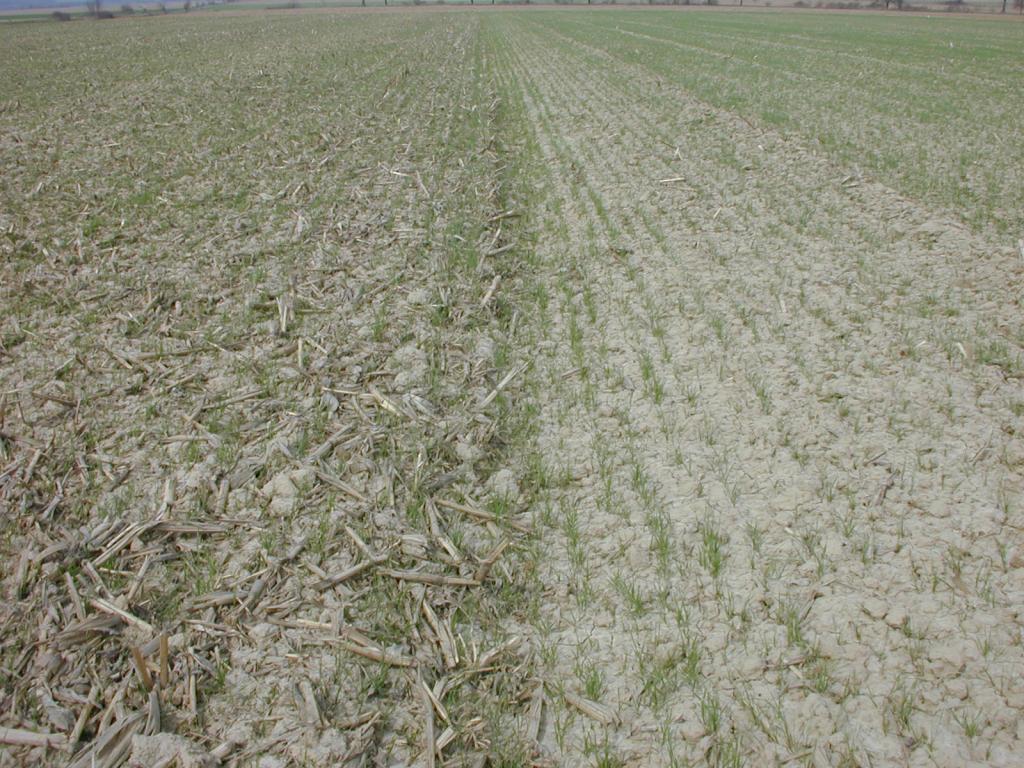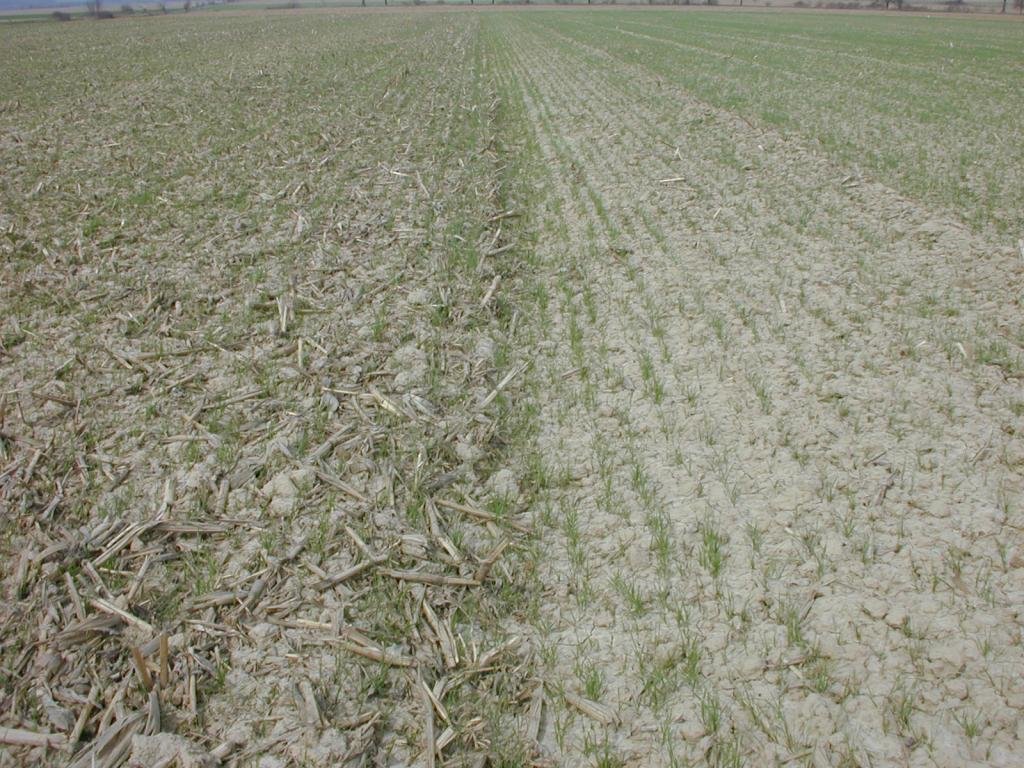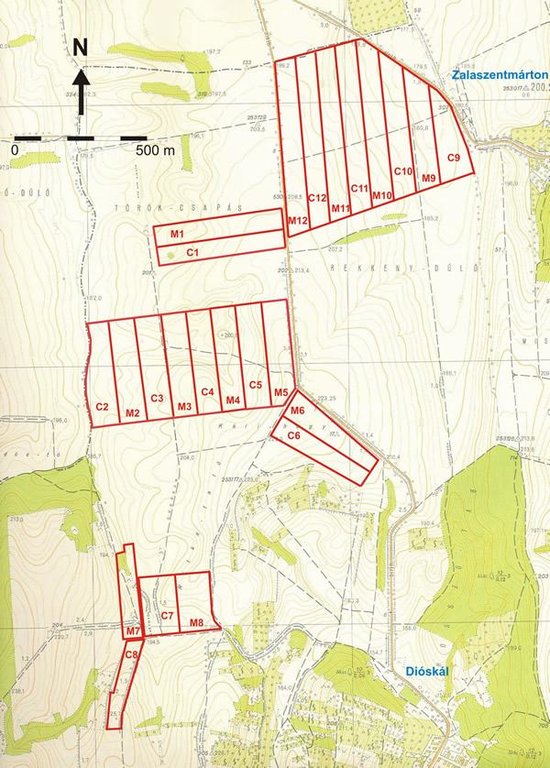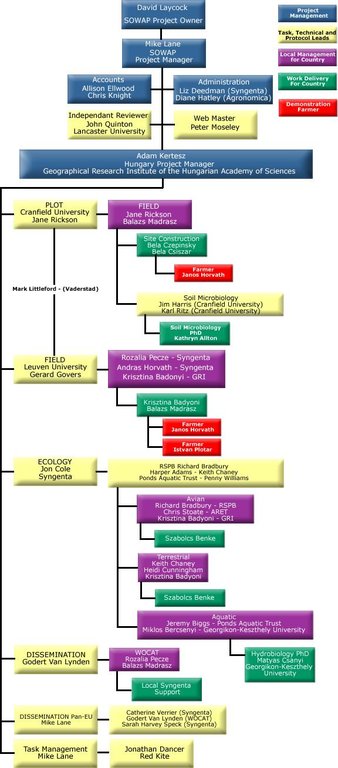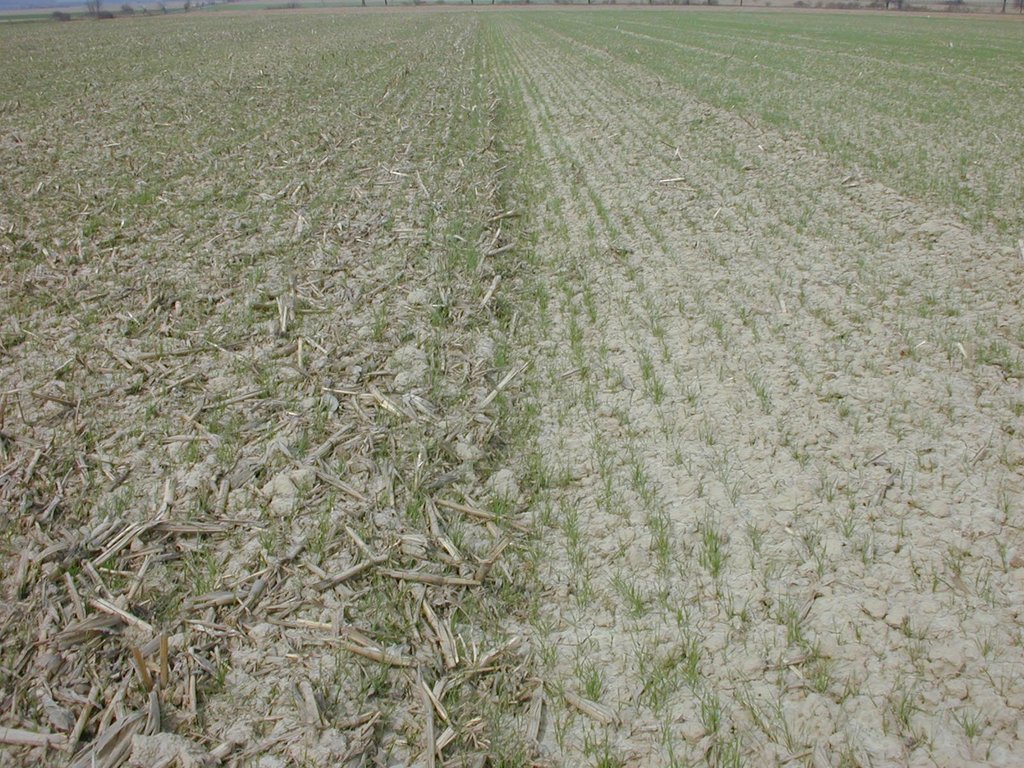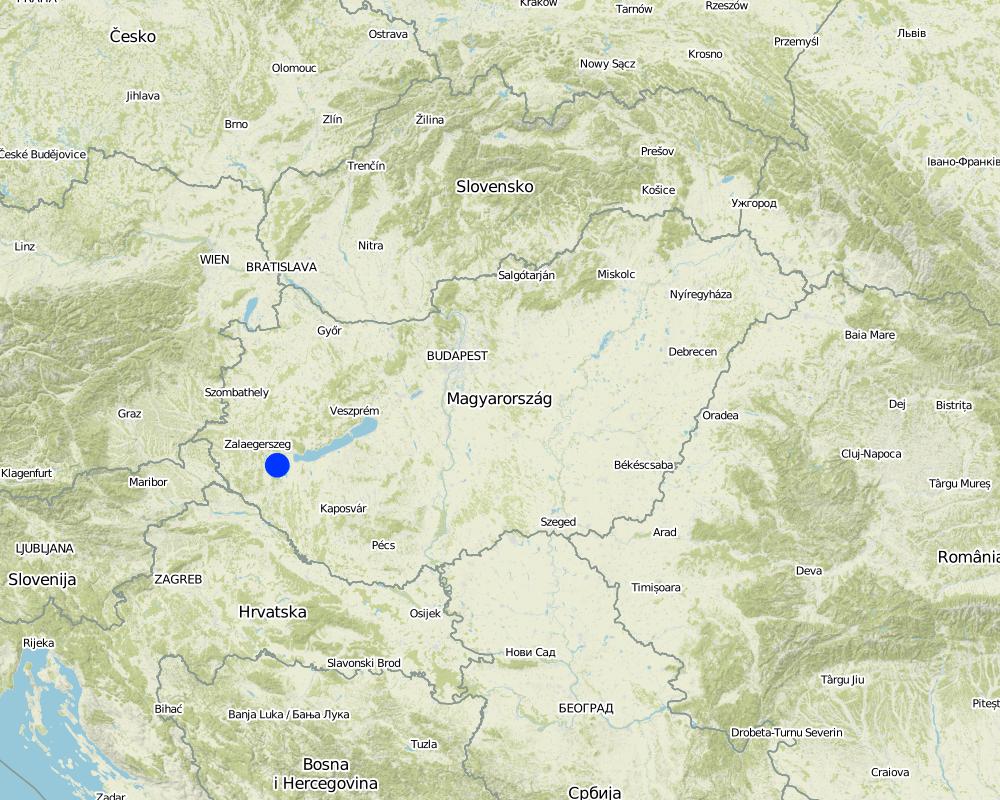Conservation tillage [Hungary]
- Creation:
- Update:
- Compiler: Adam Kertesz
- Editor: –
- Reviewer: Fabian Ottiger
approaches_2552 - Hungary
View sections
Expand all Collapse all1. General information
1.2 Contact details of resource persons and institutions involved in the assessment and documentation of the Approach
SLM specialist:
Name of the institution(s) which facilitated the documentation/ evaluation of the Approach (if relevant)
Geographical Research Institute, Hungarian Academy of Sciences (MTA CSFK) - Hungary1.3 Conditions regarding the use of data documented through WOCAT
The compiler and key resource person(s) accept the conditions regarding the use of data documented through WOCAT:
Ja
1.4 Reference(s) to Questionnaire(s) on SLM Technologies

Controlled traffic farming [Hungary]
All machinery traffic uses the same lane network within the field to reduce the total compacted area, to improve connections, and to optimise overlapping of following runs resulting in more efficient use of labour and inputs. Risks from environmental pollution are also reduced.
- Compiler: Brigitta Szabó

Conservation tillage [Hungary]
The aim of conservation tillage is to reduce the soil disturbance. It decreases decomposition of organic matter, enhances cycling of nutrients, soil structure and increases water infiltration.
- Compiler: Brigitta Toth
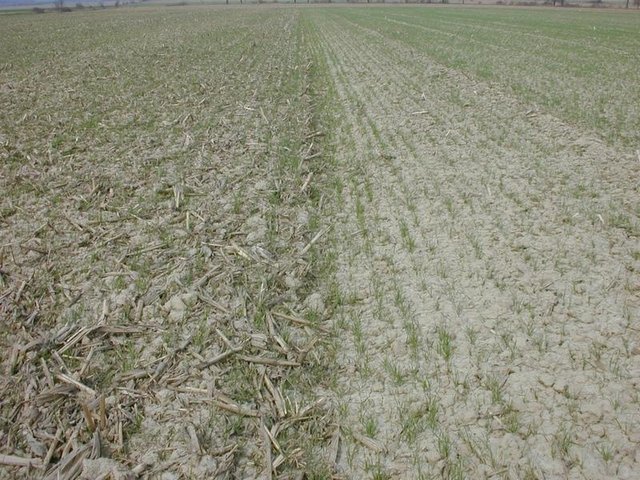
Conservation tillage [Hungary]
Non inversion, conservation (soil and water protective) tillage.
- Compiler: Ádám Kertész
2. Description of the SLM Approach
2.1 Short description of the Approach
Non inversion, conservation (soil and water protective) tillage.
2.2 Detailed description of the Approach
Detailed description of the Approach:
Aims / objectives: Purpose: Finding and Demonstrating Ways of Better Managing the Land. SOWAP (SOil and WAter Protection) aims to assess the viability of a more 'conservation-oriented' agriculture, where fewer tillage practices replace the numerous cultivations carried out under more 'conventional' arable farming systems. The use of appropriate chemicals is tested, and their potential for off-site contamination assessed, to ensure that any suggested approaches are environmentally sound. Conventional tillage is an environment friendly method, carried out by shallow tillage (with disks and direct drill) and omission of ploughing (non-inversion).
Stages of implementation: Shallow disking, direct drill, environment friendly plant-protecting materials.
2.3 Photos of the Approach
2.5 Country/ region/ locations where the Approach has been applied
Country:
Hungary
Region/ State/ Province:
Zala county
Map
×2.6 Dates of initiation and termination of the Approach
Indicate year of initiation:
2003
2.7 Type of Approach
- project/ programme based
2.8 Main aims/ objectives of the Approach
The Approach focused mainly on SLM with other activities (ecology, economics, EU and national rules and regulations)
Soil and water protection (soil loss reduction), biodiversity enhancement, Finding and Demonstrating Ways of Better Managing the Land., Finding an environment friendly technology.
The SLM Approach addressed the following problems: deffence against soil compaction
2.9 Conditions enabling or hindering implementation of the Technology/ Technologies applied under the Approach
availability/ access to financial resources and services
- hindering
purchase new machines
Treatment through the SLM Approach: It is easier to get financial support if you apply modern technologies
legal framework (land tenure, land and water use rights)
- enabling
The existing land ownership, land use rights / water rights moderately helped the approach implementation
3. Participation and roles of stakeholders involved
3.1 Stakeholders involved in the Approach and their roles
- local land users/ local communities
Working land users were work equally divided between men and women (1 family (3 persons))
- SLM specialists/ agricultural advisers
Reserach Institute
- national government (planners, decision-makers)
- international organization
- The SOWAP project
3.2 Involvement of local land users/ local communities in the different phases of the Approach
| Involvement of local land users/ local communities | Specify who was involved and describe activities | |
|---|---|---|
| initiation/ motivation | passive | Mainly:rapid/participatory rural appraisal; partly: public meetings; 1 family was choosen (on the basis of suitable land size, machines etc.) |
| planning | interactive | workshops/seminars |
| implementation | interactive | responsibility for major steps |
| monitoring/ evaluation | passive | interviews/questionnaires; |
| Research | none |
3.4 Decision-making on the selection of SLM Technology/ Technologies
Specify who decided on the selection of the Technology/ Technologies to be implemented:
- mainly SLM specialists, following consultation with land users
Explain:
Decisions on the method of implementing the SLM Technology were made by mainly by SLM specialists with consultation of land users
4. Technical support, capacity building, and knowledge management
4.1 Capacity building/ training
Was training provided to land users/ other stakeholders?
Ja
Specify who was trained:
- land users
- SWC specialists, politicians/decision makers
Form of training:
- on-the-job
- farmer-to-farmer
- public meetings
Subjects covered:
methods of conservation tillage, conservation tillage in UK
4.2 Advisory service
Do land users have access to an advisory service?
Ja
Describe/ comments:
Name of method used for advisory service: Conservation tillage (Soil and Water Protection); 1) Advisory service was carried out through: projects own extension structure and agents; Extension staff: members f the SOWAP project 2) Target groups for extension: land users; Activities: field visit and meetings
Advisory service is quite adequate to ensure the continuation of land conservation activities
4.3 Institution strengthening (organizational development)
Have institutions been established or strengthened through the Approach?
- no
4.4 Monitoring and evaluation
Is monitoring and evaluation part of the Approach?
Ja
Comments:
bio-physical aspects were regular monitored through measurements
technical aspects were regular monitored through measurements
economic / production aspects were regular monitored through measurements
no. of land users involved aspects were regular monitored through observations
management of Approach aspects were regular monitored through observations
There were few changes in the Approach as a result of monitoring and evaluation: If the soil is very compact the direct drilling is impossible therfore preliminary disking is necessary.
4.5 Research
Was research part of the Approach?
Ja
Give further details and indicate who did the research:
Nevertheless this project includes natural and socio-economic aspects.
Research was carried out both on station and on-farm
5. Financing and external material support
5.1 Annual budget for the SLM component of the Approach
Comments (e.g. main sources of funding/ major donors):
Approach costs were met by the following donors: international (EU-Life foundation): 50.0%; international non-government (Syngenta Ltd.): 50.0%
5.2 Financial/ material support provided to land users
Did land users receive financial/ material support for implementing the Technology/ Technologies?
Ja
5.3 Subsidies for specific inputs (including labour)
- equipment
| Specify which inputs were subsidised | To which extent | Specify subsidies |
|---|---|---|
| machinery | partly financed | |
| tools | partly financed | |
- agricultural
| Specify which inputs were subsidised | To which extent | Specify subsidies |
|---|---|---|
| seeds | partly financed | |
| fertilizers | partly financed | |
| Biocides | partly financed | |
If labour by land users was a substantial input, was it:
- paid in cash
5.4 Credit
Was credit provided under the Approach for SLM activities?
Nee
6. Impact analysis and concluding statements
6.1 Impacts of the Approach
Did the Approach help land users to implement and maintain SLM Technologies?
- No
- Yes, little
- Yes, moderately
- Yes, greatly
demonstrations, meetings, articles, publications, TV films.
Did other land users / projects adopt the Approach?
- No
- Yes, little
- Yes, moderately
- Yes, greatly
A couple of land users keep trying this method because it reduces theire costs.
6.3 Sustainability of Approach activities
Can the land users sustain what has been implemented through the Approach (without external support)?
- yes
6.4 Strengths/ advantages of the Approach
| Strengths/ advantages/ opportunities in the land user’s view |
|---|
| future subsidy expectations and better chance for competition |
| soil loss reduction |
| economicalness |
| environmental consciousness agriculture |
| Strengths/ advantages/ opportunities in the compiler’s or other key resource person’s view |
|---|
| soil loss reduction |
| biodiversity enhancement |
| spreading of environmental conscious agriculture |
| soil and water protection |
| economicalness |
6.5 Weaknesses/ disadvantages of the Approach and ways of overcoming them
| Weaknesses/ disadvantages/ risks in the land user’s view | How can they be overcome? |
|---|---|
| reduced production (yield) | |
| expensive machines |
| Weaknesses/ disadvantages/ risks in the compiler’s or other key resource person’s view | How can they be overcome? |
|---|---|
| Too many tools are required. Expensive machines. |
7. References and links
7.1 Methods/ sources of information
- field visits, field surveys
- interviews with land users
7.2 References to available publications
Title, author, year, ISBN:
BIRKÁS, M. (2002): Környezetkímélö és energiatakarékos talajméelés.
Available from where? Costs?
SZIE, Mezógazdasági és Környezettudományi Kar, Gödöllö, 345 p.
Title, author, year, ISBN:
HOLLAND, J.M. (2004): The environmental consequences of adopting conservation tillage in Europe: reviewing the evidence.
Available from where? Costs?
Agriculture Ecosystems & Environment, Vol. 103. No. 1., pp. 1-25.
Title, author, year, ISBN:
Talajkímúlö múvelés és környezetvédelem
Available from where? Costs?
Gyakorlati Agrofórum Extra 3.
Title, author, year, ISBN:
BIRKÁS, M., JOLÁNKAI, M., GYURICZA, CS., PERCZE, A. (2004): Tillage effects on compaction, earthworms and other soil quality indicators in Hungary.
Available from where? Costs?
Soil & Tillage Research, Vol. 78. No. 2., pp. 185-196.
Title, author, year, ISBN:
MANNINGER, G. A. (1957): A talaj sekély múvelése.
Available from where? Costs?
Mezógazdasági Kiadó, Budapest, 135 p.
Links and modules
Expand all Collapse allLinks

Controlled traffic farming [Hungary]
All machinery traffic uses the same lane network within the field to reduce the total compacted area, to improve connections, and to optimise overlapping of following runs resulting in more efficient use of labour and inputs. Risks from environmental pollution are also reduced.
- Compiler: Brigitta Szabó

Conservation tillage [Hungary]
The aim of conservation tillage is to reduce the soil disturbance. It decreases decomposition of organic matter, enhances cycling of nutrients, soil structure and increases water infiltration.
- Compiler: Brigitta Toth

Conservation tillage [Hungary]
Non inversion, conservation (soil and water protective) tillage.
- Compiler: Ádám Kertész
Modules
No modules


